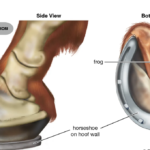As winter settles in, the air in your home can become dry, causing discomfort and potentially leading to health issues. Maintaining adequate home humidity in winter is essential for comfort, health, and the preservation of your home’s furnishings. Low humidity levels can cause dry skin, irritated respiratory systems, static electricity, and even damage to wooden furniture or floors. Fortunately, there are practical and effective ways to increase humidity in home during winter to create a more comfortable living environment. In this article, we’ll explore why humidity drops in winter, the ideal home humidity in winter, and a variety of methods to boost humidity levels in home during winter. By the end, you’ll have a comprehensive guide to keeping your home’s air moist and comfortable.
Why Humidity Drops in Winter
Winter brings cold temperatures, and with them, a natural decrease in indoor humidity. When you heat your home, the warm air absorbs moisture, making the environment feel drier. Heating systems like furnaces or space heaters exacerbate this issue by circulating dry air. Outdoor air in winter also holds less moisture due to lower temperatures, and when this air enters your home and is warmed, its relative humidity drops significantly. For example, air at 20°F outside with 80% humidity can drop to just 10-20% humidity when heated to 70°F indoors. This drastic reduction can lead to a host of problems, from chapped lips to increased susceptibility to colds.
The ideal home humidity in winter is generally between 30% and 50%, according to experts like the Environmental Protection Agency (EPA). Below 30%, you may experience discomfort, while above 60% can promote mold growth and other issues. Maintaining this range ensures a healthy and comfortable indoor environment.
Signs Your Home Needs More Humidity
Before diving into solutions, it’s important to recognize the signs of low humidity in your home:
- Dry Skin and Lips: If your skin feels tight or your lips are constantly chapped, low humidity may be the culprit.
- Respiratory Irritation: Dry air can irritate your throat, nose, and lungs, leading to coughing or worsened allergies.
- Static Electricity: Frequent static shocks when touching objects indicate dry air.
- Wood Damage: Wooden furniture, floors, or musical instruments may crack or warp in low-humidity conditions.
- Increased Illness: Dry air can make you more susceptible to colds and respiratory infections, as it dries out mucous membranes.
If you’re experiencing these issues, it’s time to take action to increase humidity in your home.
Methods to Increase Home Humidity in Winter
There are several practical ways to boost humidity in your home, ranging from simple, low-cost solutions to more advanced systems. Below, we’ll explore a variety of methods to help you achieve the right humidity levels in home during winter.
1. Use a Humidifier
One of the most effective ways to increase indoor humidity is by using a humidifier. Humidifiers add moisture to the air, counteracting the drying effects of winter heating. There are several types of humidifiers to choose from:
- Cool Mist Humidifiers: These release a cool vapor into the air and are energy-efficient. They’re ideal for larger rooms or homes with children, as there’s no risk of burns.
- Warm Mist Humidifiers: These boil water to produce steam, adding warmth and moisture to the air. They’re great for smaller spaces but require caution around kids or pets.
- Ultrasonic Humidifiers: These use high-frequency vibrations to create a fine mist. They’re quiet and energy-efficient, making them a popular choice.
- Whole-House Humidifiers: Installed directly into your HVAC system, these maintain consistent humidity throughout your home. They’re more expensive but ideal for larger homes.
Tips for Using a Humidifier:
- Place the humidifier in the room where you spend the most time, such as the bedroom or living room.
- Clean the humidifier regularly to prevent mold or bacteria buildup.
- Use a hygrometer to monitor humidity levels and avoid over-humidification.
- Opt for distilled water to reduce mineral buildup in the device.
A humidifier can quickly bring your home’s humidity into the ideal 30-50% range, improving comfort and health.
2. Add Houseplants
Houseplants are a natural and aesthetically pleasing way to increase humidity. Plants release moisture into the air through a process called transpiration. Grouping several plants together creates a microclimate with higher humidity. Some excellent humidity-boosting plants include:
- Peace Lily: Thrives in low light and releases significant moisture.
- Boston Fern: A lush plant that adds humidity and purifies the air.
- Spider Plant: Easy to care for and effective at increasing moisture.
Tips for Using Houseplants:
- Water plants regularly but avoid overwatering, as soggy soil can lead to mold.
- Place plants in high-traffic areas like living rooms or bedrooms.
- Mist plant leaves occasionally to enhance transpiration.
While plants alone won’t fully humidify a large space, they’re a great supplement to other methods.
3. Air-Dry Clothes Indoors
Hanging wet clothes to dry indoors is a simple, cost-effective way to increase humidity. As the clothes dry, the water evaporates into the air, raising moisture levels. This method is especially useful in small apartments or homes without a dryer.
Tips for Air-Drying Clothes:
- Use a drying rack in a well-ventilated area to prevent mold growth.
- Place a fan near the clothes to improve air circulation and speed up drying.
- Avoid hanging clothes in overly humid areas to prevent musty odors.
This method is eco-friendly and doubles as a way to save on energy costs.
4. Use a Bowl of Water Near Heat Sources
Placing open containers of water near heat sources, such as radiators or vents, allows the water to evaporate and add moisture to the air. This is a low-cost, low-maintenance solution.
Tips for Using Water Bowls:
- Use wide, shallow containers to maximize evaporation.
- Place bowls in multiple rooms for broader coverage.
- Add essential oils to the water for a pleasant scent, if desired.
While this method won’t dramatically increase humidity, it’s a great supplementary tactic.
5. Cook and Boil Water
Cooking activities like boiling water, simmering soups, or brewing tea release steam into the air, naturally increasing humidity. Leaving the lid off a pot of boiling water or using a kettle can add moisture to your kitchen and nearby rooms.
Tips for Cooking to Increase Humidity:
- Cook with water-based methods, like steaming or boiling, rather than dry methods like roasting.
- Open the kitchen door to allow moist air to circulate throughout the home.
- Be cautious of condensation on windows, which can lead to mold if not managed.
This method is practical for those who enjoy cooking and want a low-effort humidity boost.
6. Take Shorter, Warmer Showers with the Door Open
Showering produces steam, which can increase humidity in your bathroom and beyond. By leaving the bathroom door open and taking shorter, warmer showers, you allow moist air to spread throughout your home.
Tips for Showering to Increase Humidity:
- Avoid excessively hot showers, as they can dry out your skin.
- Ensure proper ventilation to prevent mold growth.
- Use a bathroom fan sparingly to retain some moisture in the air.
This method is easy to incorporate into your daily routine and requires no additional equipment.
7. Seal Air Leaks
Dry outdoor air entering your home can lower indoor humidity. Sealing air leaks around windows, doors, and other openings helps retain moisture and maintain a stable indoor environment.
Tips for Sealing Air Leaks:
- Use weatherstripping or caulk around windows and doors.
- Install draft stoppers at the base of doors.
- Check for leaks in attics or basements and seal them with appropriate materials.
Sealing leaks also improves energy efficiency, reducing heating costs.
8. Use a Humidifying HVAC Filter
Some HVAC systems allow for humidifying filters or attachments that add moisture to the air as it circulates. These are less common but effective for maintaining consistent humidity levels.
Tips for Using HVAC Humidifiers:
- Consult a professional to ensure compatibility with your system.
- Regularly maintain the filter to prevent mold or bacteria growth.
- Monitor humidity levels to avoid over-humidification.
This method is ideal for those with central heating systems who want a seamless solution.
9. Limit Use of Dehumidifying Appliances
Appliances like air conditioners, dehumidifiers, or exhaust fans can reduce indoor humidity. In winter, limit their use to preserve moisture in the air.
Tips for Managing Appliances:
- Turn off exhaust fans after cooking or showering to retain moisture.
- Avoid using air conditioners in winter, as they dry out the air.
- If using a dehumidifier for specific areas (like a basement), isolate its use from the rest of the home.
Being mindful of appliance use can make a noticeable difference in humidity levels.
Monitoring and Maintaining Humidity Levels
To ensure you’re maintaining the ideal home humidity in winter, invest in a hygrometer, a device that measures indoor humidity. Place it in a central location, away from direct heat sources or windows, for accurate readings. Check humidity levels regularly and adjust your methods as needed. If humidity exceeds 50%, reduce humidifier use or improve ventilation to prevent mold growth.
Health and Home Benefits of Proper Humidity
Maintaining proper humidity in winter offers numerous benefits:
- Health: Adequate moisture reduces dry skin, irritated eyes, and respiratory issues. It also supports your immune system by keeping mucous membranes hydrated.
- Comfort: Moist air feels warmer, allowing you to lower the thermostat and save on heating costs.
- Home Preservation: Proper humidity prevents cracking in wooden furniture, floors, and musical instruments.
Potential Risks and How to Avoid Them
While increasing humidity is beneficial, over-humidification can lead to problems like mold, mildew, or dust mites. To avoid these issues:
- Keep humidity between 30% and 50%.
- Clean humidifiers regularly to prevent bacterial growth.
- Ensure proper ventilation, especially in bathrooms and kitchens.
- Use exhaust fans or open windows briefly if condensation appears on windows.
Conclusion
Increasing home humidity in winter is achievable with a combination of simple and advanced methods. From using humidifiers and houseplants to air-drying clothes and sealing air leaks, you can create a comfortable and healthy indoor environment. By monitoring humidity levels in home during winter with a hygrometer and aiming for the ideal home humidity in winter of 30-50%, you’ll enjoy the benefits of moist air without the risks of over-humidification. Start with one or two methods that suit your lifestyle and home setup, and adjust as needed to maintain a cozy, moisture-balanced home all winter long.








